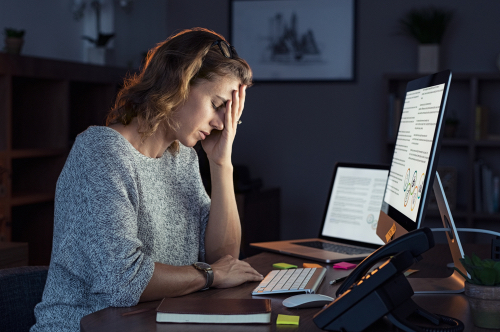


The World Health Organisation (WHO) has officially recognised burnout as a medical condition.
Faced by many modern professionals, doctors have identified a link between feelings of fatigue, low motivation and professional dissatisfaction with prolonged exposure to workplace stress.
The WHO has identified three main symptoms of workplace burn-out:
- Feelings of energy depletion or exhaustion
- Mental distance from one’s job, or feelings of negativism or cynicism related to work
- Reduced professional efficacy.
Those who have been diagnosed with burn-out are also more likely to fall ill due to a weakened immune system. They also experience difficulty sleeping and changes in appetite.
Living with feelings of burn-out for a long time can also trigger more serious health issues, so it’s important to learn how to combat workplace stress.
At House Call Doctor, we’re seeing more people experience symptoms reflecting a mid-year burn-out, so we’ve put together some tips to help you get back on top of your game.
Take a real lunch break
Stress burns through your energy resources, so you need to replenish. Eating a lunch high in protein and fibre will help give you a midday boost and rebalance your mood.
Taking time to eat and be with yourself, preferably outside in the fresh air, can also help you recharge.
Vitamin D
Spending days inside an office with artificial air and light will eventually take a toll. Get up and get outside. Not only will going outside give you an excuse to get moving, but the sunshine will make you feel better.
UVB rays from the sun are converted into essential vitamins and hormones responsible for the absorption of calcium and protecting your immune system.
Even on an overcast day, spending 15 minutes outside can drastically improve your mood.
Breathe and count to five
Deep, calm and proper breathing can trick your mind into thinking you aren’t stressed anymore. Stress impacts the breath cycle, which in turn triggers an accelerated heart rate that makes your body feel like it’s been running – even if you’re just sitting at your desk.
On the other hand, if you breathe slowly your body will follow, calming you down.
Diaphragmatic breathing relaxes the tension in your shoulders, neck and chest which helps to reduce tension headaches. You can set an alarm reminding you to do some breathing exercises or take a moment after your breaks to settle down.




